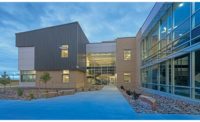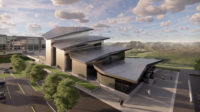Tasked with maintaining 23,000 miles of highway, 3,500 bridges and the 35 mountain passes in the state that are open year-round, the Colorado Dept. of Transportation (CDOT) recently reached out to the public for help in creating a plan about how to spend an anticipated $1.7 billion in state funding over the next several years.
To determine the smartest use of these funds, CDOT officials spent five months engaging residents from across the state via telephone town halls, booths at community fairs and festivals, online surveys and 64 county meetings. The result is a 10-year strategic pipeline of projects created by CDOT based on those conversations called “Your Transportation Plan.”
“There is tremendous pressure associated with the growth the state is seeing,” says Shoshana Lew, CDOT executive director. In a letter to stakeholders last May, she explained that instead of starting with the age-old question of “how do we pay for it?” the agency is asking “what challenges do we face as a community and what infrastructure investments will help solve them?”
Lew, most recently the COO of the Rhode Island Dept. of Transportation, says reframing the question has helped prioritize the agency’s investments to maximize the reach of taxpayer dollars and deliver transportation projects that move people and goods safely and efficiently throughout Colorado.
“This is in contrast to the agency’s previous plans, which focused on a 25-year future,” says Rebecca White, director of CDOT’s division of transportation development. “All Coloradans want a better road system, and looking out 10 years is more compelling.”
CDOT also aims to provide transparency and accountability. “The amounts of money we deal with are very big, and unless you can explain in tangible English terms where the money is going, it can seem a bit evasive outside of our four walls,” Lew adds.
Playing Catch-Up
Nearly half of CDOT’s annual budget goes toward maintaining the state’s current highways and byways, with the goal of sustaining at least a C+ road surface grade. But Colorado has grown by 39% over the last 20 years and is projected to grow another 30% in the next 20. Most of that growth has occurred along the Front Range and in select mountain corridors. The state’s main arteries, especially I-25 and I-70, have become choke points as a result.
Meanwhile, some rural roads haven’t received a thorough repaving since the 1970s. An August 2019 report by the Reason Foundation showed that Colorado has slipped to 47th in the nation when it comes to the condition of its rural pavements.
The multi-year “Your Transportation Plan” will focus 75% of its funding on mobility and safety projects, with 25% of funds going toward a first-ever investment in rural roads, the largest such investment in recent history.
“There is tremendous pressure associated with the growth the state is seeing.”
– Shoshana Lew, Executive Director, CDOT
While the comprehensive plan aims to fix the state’s assets across the board, it also increases transit access, particularly in communities with aging populations, and continues to add transit capabilities to meet the immense growth along the Front Range.
“Of the $1.7 billion in legislative funding, more than $150 million is dedicated to transit, and nearly 20% is allocated to pavement projects in rural areas,” says CDOT CFO Jeffery Sudmeier.
Along the mountain corridor, the plan prioritizes the Floyd Hill project, a section of I-70 that bogs down on the weekends year-round, making the drive to and from the slopes especially brutal during ski season. Lew says CDOT will conduct a capacity expansion on that area over next few years.
Vail Pass, another bottleneck, also will be addressed, and the agency will consider adding peak-period shoulder lanes, as they’ve done along other busy stretches of this key mountain artery. This allows CDOT to open an extra lane in each direction during the heaviest travel times.
The very thing that makes the mountain corridor beautiful creates a “geometry problem” that is unique compared with other highway corridors, Lew says. “It’s a geologically complicated environment, and there’s just not space to build out.”
CDOT has ongoing discussions for alternative travel, which includes looking at smaller transit options in the shoulder lanes and adding ridesharing platforms, either on a fixed schedule or according to demand.
Bustang—CDOT’s intercity bus service—has been a popular transit option, with nearly full West Line buses going to specific mountain destinations. The service was put on hold at the end of March due to the state’s COVID-19 social-distancing mandate.
Key Projects Address Growth
CDOT is working to maintain the continuity of its construction program, with $912 million in projects underway across the state in 2020. Construction began in 2018 and will be complete in 2022 on the $1.2-billion Central 70 megaproject.
The public-private partnership is reconstructing a 10-mile stretch of I-70 between I-25 and Chambers Road in east Denver. One new express lane is being added in each direction, an aging 56-year-old viaduct is being removed and the interstate will be lowered between Brighton and Colorado boulevards. A 4-acre park will be placed over a portion of the lowered interstate near an elementary school.
Just south of Denver, another large project is addressing congestion on a heavily traveled stretch of highway between Monument and Castle Rock. The $350-million I-25 South Gap project broke ground in 2019. It will widen 18 miles of I-25 from two to three lanes in each direction.
The new lane will operate as an express lane, giving drivers the option of paying a toll to ease their travel time. The project also widens shoulders, rebuilds bridges, adds new wildlife crossings and resurfaces roads using new pavement technology. The anticipated completion is 2022.
Other key CDOT projects include the $300-million I-25 North Express Lanes project in Weld and Larimer counties and the $276-million C-470 Express Lanes Project, which widens 12.5 miles of C-470 between I-25 and Wadsworth Boulevard in southwest Denver.
The agency launched two other large projects in 2019: the $250-million I-25 North Express Lanes (Segment Six), which will reduce congestion for travelers in northern Colorado, and the $70-million I-70 Westbound Peak Period Shoulder Lane project, which builds a 12-mile tolled, peak-period shoulder lane, designed to keep freeway traffic flowing in Clear Creek County at peak travel times.
Partnering During a Pandemic
The agency’s ongoing work will be a key factor in keeping Colorado’s economy moving over the next several months, even as the state is hit hard by a slowdown from the coronavirus pandemic.
“CDOT’s main contribution during any crisis—whether in a snowstorm or a pandemic—is keeping the roads open,” Lew says. “It’s crucial to maintain vital arteries for people who need to move critical services, and it’s incredibly important to move freight, with so many people relying on the goods being delivered.”
CDOT’s Intelligent Transportation Systems (ITS) branch collects data that provides travel times, speeds, traffic queuing, congestion and weather impacts. The data helps with real-time, informed decisions on traffic and highway operations. Recently, the ITS Team was asked by the Governor’s Innovative Task Force on COVID-19 to provide data on traffic volumes and highway incidents to determine if social distancing was working.
“Our data showed a significant decline in traffic volumes, incidents and congestion before, during and after the state and other public health officials issued orders for business closures, telecommuting and staying home,” says Bob Fifer, CDOT ITS branch manager.
CDOT also has been instrumental in developing the state’s multi-industry construction guidance, which includes best practices for contractors.
“We’re doing things on the jobsite to work smarter, spreading the crews out. If they can’t, then we’re giving them PPE respirators and face masks,” says CDOT’s chief engineer Steve Harelson.
The guidance also includes protocols for things people might not think about with construction, like working in remote areas, where people must share hotel rooms and carpools.
“Contractors are sharing their plans with each other, and it has been heartwarming to see,” Harelson says. “We’re all in this together.”









